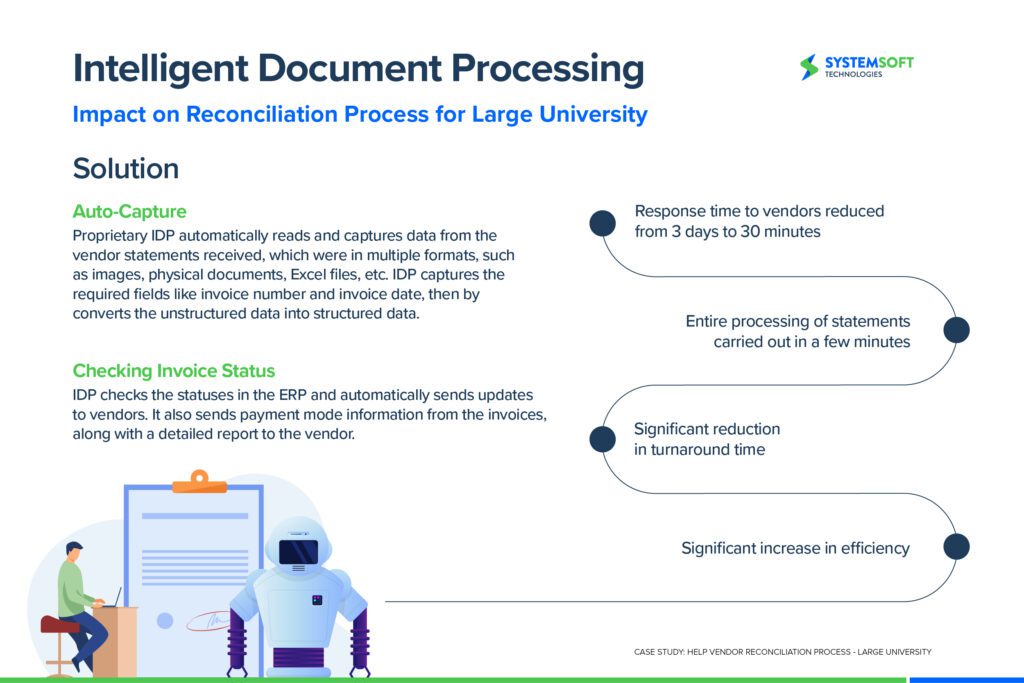The pandemic is compelling organizations to aggressively explore technology-driven automation, as they look to offset operational and financial challenges. For many, bots have been used to automate high-volume, repetitive and simple processes.
But the scope and complexity of what can be tackled remains limited. Automating the type of processes that have historically been the province of knowledge workers has remained elusive.
An answer to the dilemma is intelligent automation (iA) or hyperautomation, which is a solution combined from advanced technologies for the digital transformation of processes. Gartner named iA as a Top Strategic Technology Trend for 2021.

Intelligent Automation Journey
Yet, there are many organizations challenged to extend automation bot capabilities for complex tasks and are wondering if intelligent automation is more hype than reality.
We say iA is real. Especially when it’s used to improve the customer experience, optimize productivity and generate revenue.
So, where are you on your intelligent automation journey?
In my vast experience leading companies on their journey, I’ve found it’s important to understand where you are on that journey. Are you starting, struggling or successful? In most cases, you will find yourself in one of these three areas.
Knowing enables you to better position your next moves tactically, with absolute alignment to an overarching strategy.

Behind Intelligent Automation(iA)
Understanding iA means knowing intelligent systems accelerate humans with technology by automating repetitive tasks, procedures and objective decisions. Ultimately, it depends on an organization’s real-time business needs.
From a technology perspective, iA is most successful when robotic process automation (RPA), optical character recognition (OCR), machine learning (ML) and artificial intelligence (AI) are interconnected and aligned to the business strategy.
Benefiting from predictive analytics and AI, intelligent automation can make automated and intelligent decisions, with enough flexibility to learn and adapt. Another key feature is the unintrusive integration between legacy and modern systems used in an organization.
Ideal cases include stable, repetitive manual processes, which leverage multiple disparate systems, data and digital documents. Although objective processes with clear decision criteria are exemplary, AI and ML can enable the automation of subjective outcomes.
However, the application of intelligent automation to subjective processes can be exponentially more complex and requires additional expertise, which may not exist inside your organization.
Therefore, you’re provoked to seek help.

Ready to Learn More?
Recently, System Soft Technologies (SSTech) rolled out a free webinar for business and IT leaders. We presented five use cases during our webinar that convey the power of iA. We discussed how to identify where you are in your automation journey and what your next steps should be.
Here’s a preview of the success a bank, mortgage wholesaler and university reported after implementing intelligent automation.



For these organizations, you can see intelligent automation is not just hype. Intelligent automation is driving operational efficiency, uplifting revenue and enhancing customer engagement by intelligently automating complex processes for powerful ROI outcomes.
[Watch the webinar: Cutting Through the Hype of Hyperautomation]
Business and IT Leaders Need Intelligent Automation
If you’re not sure where to start your RPA or iA journey and which processes should be prioritized, then watching the on-demand webinar is a great start.
It will answer questions like:
- Why aren’t ROI and results meeting expectations?
- What architecture and methodology are appropriate for intelligent automation?
- How do you further improve successful RPA implementations by increasing bots capabilities with AI, ML and IDP?
[Also check out: RPA Zero to Hero: How to Rescue Your Bots]

Conclusion
After you watch the intelligent automation webinar, let’s talk.
I can work with you and your team to set up an Intelligent Automation QuickStrike. It’s a workshop, with a pre-assessment questionnaire and agenda, where we collaborate with you to identify:
- Metrics for process evaluation
- Weighting
- Process and functional scoping and definition
- Scoring
When we’re done with the workshop, you get a report, which covers:
- Sequencing and time estimation
- A short- and long-term plan
- Best practice guidance
For more information, you can schedule your Intelligent Automation QuickStrike Assessment today.
About the Author: Thomas Helfrich

Thomas Helfrich is Vice President of the Intelligent Automation Practice at System Soft Technologies. Tom uses AI, ML and RPA to drive disruptive business performance and help organizations offset operational and financial challenges. His powerful knowledge of Blue Prism, Automation Anywhere, UiPath and Datamatics, combined with his expertise in the application of advanced technologies, spurs cost-effective business scale through automating processes and augmenting humans.
